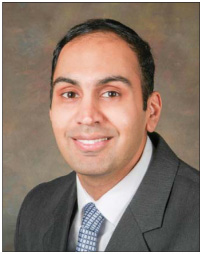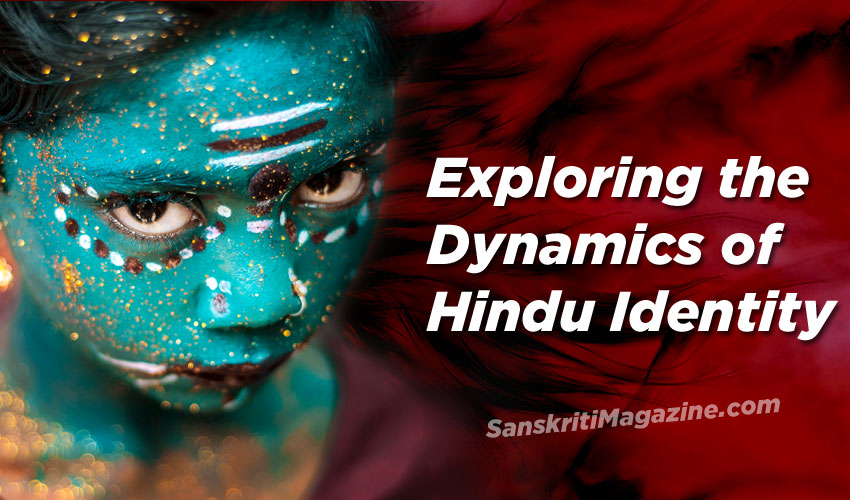I grew up publicly ashamed of my religious background. That’s all changed.
 Throughout my academic and journalistic career I worked to reconcile my Hindu identity with my professional life. Like many in my generation, I craved acceptance and perceived a false choice between assimilation and insularity. I’ve witnessed both extremes: I’ve seen second-generation Hindus who stay safely within the confines of their own community, and I’ve seen others who completely give up their cultural and religious identities, even anglicizing their names so that the Sanskrit or Tamil doesn’t sound so foreign. How many of you know someone named Krishnan who changed his name to Kris or something like that? It happens. It’s been happening for decades in this country.
Throughout my academic and journalistic career I worked to reconcile my Hindu identity with my professional life. Like many in my generation, I craved acceptance and perceived a false choice between assimilation and insularity. I’ve witnessed both extremes: I’ve seen second-generation Hindus who stay safely within the confines of their own community, and I’ve seen others who completely give up their cultural and religious identities, even anglicizing their names so that the Sanskrit or Tamil doesn’t sound so foreign. How many of you know someone named Krishnan who changed his name to Kris or something like that? It happens. It’s been happening for decades in this country.
I grew up in America, and one of the most important things for me was how my family passed down ritual to me. Like many of my fellow second-generation Hindu Americans, I was bequeathed the rituals without necessarily understanding the meanings behind them. More importantly, my parents were never given a manual on how to teach me to balance my Hindu values and practices with the daily reality of being American. Among those realities was the fact that, for a time, I was the only Hindu in my grade school.
Our parents’ generation believed they could raise Indian Hindus in America without necessarily acculturating their children to the real-world environment. For example, when I was in grade school, the textbooks taught me that the caste system was oppressive and that Hinduism is a patriarchal and somewhat strange religion.
In the eighties several popular movies came out that lampooned Hinduism. Some of you might remember Indiana Jones and the Temple of Doom. There’s an infamous dinner scene where they serve chilled monkey brains from a severed skull. For weeks after seeing that, I was bullied incessantly by my classmates. More importantly, I had a teacher who—rather than trying to understand what my faith identity was—callously asked, “Well, is that true, do Indians eat monkey brains?”
For this and other reasons, and like many in my generation, I grew up publicly ashamed of my religious identity. I had no tools to help me explain my religious heritage, so I could not take part as an equal in any interfaith dialogue. I went through a period—especially as a teenager—where I openly rejected my Hinduness. At home I would still practice; but in public you couldn’t get me near a temple.
I went to the University of Minnesota where, for the first time in my life, I was alone, 1,200 miles from my family—and almost every day, someone would try to convert me. Do you know the first thing I did to make myself feel more at home? I put together a small altar in my dorm room with murtis of Lord Balaji, Hanuman and Murugan. That little corner became my solace.
What made me truly appreciate my Hindu identity had nothing to do with interactions with other Hindus. It was a conversion attempt. I was in the gym working out when a “Campus Crusade” guy approached, offering to help me work out. I said, “Sure. I could use some help putting this weight up.” While assisting me, he suggested we could play football together. I had played football in high school, so I consented, “Great. Let’s play football later!” Then he proceeded to invite me to his non-denominational church of worship. I declined, “Nah, I’m good. I’m not Christian.” I said that unguardedly, just as I was lifting 180 pounds, which was a lot for me. The guy abruptly turned and left me, a 17-year-old, holding all that weight. It proceeded to drop on my chest. Summoning the strength of Lord Balaji, I was somehow able to get that weight off. It was a profound (I could even say heavy) lesson. I had been confronted with a threat to my Hindu identity, and I had responded by embracing it.
Fast forward, years later. Here I am, a second-generation Hindu American who has seen too many of my peers abandon their Hindu identity. They did not necessarily convert to other religions, but they don’t identify as Hindu. The beauty of Hinduism is that it’s not dogmatic; but on the flip side, that lack of dogma forces us living in the diaspora to figure out how to define Hinduism for ourselves.
Think about this: when you see someone who is of the Jewish faith, someone who is of the Christian faith, someone who is of the Muslim faith, take on a leadership role, generally these leaders acknowledge their faith even within the context of our secular society. How many of us do that? So many Hindus are leaders in our various spheres of influence, yet we’re hesitant to share our Hinduness. We think, “Oh, there’s no reason to bring up my Hindu identity.” My question is: Why not? Isn’t it our faith that has guided us all along? Isn’t it dharma that has made us do right, that has fortified us so we can lead, that has inspired us to help those in need?
Some of the strongest Hindu populations in the world are found in Malaysia, Guyana, Trinidad, South Africa and Mauritius. In those places Hindus remain strong in their religious and cultural identity because they face the daily threat of conversion. Instead of walking away from their religion, they gather together, affirm their spiritual heritage and give each other strength.
~ Murali Balaji, PhD, a native of Philadelphia, journalist and author, is Director of Education and Curriculum Reform at the Hindu American Foundation. This column is excerpted from his October 20, 2013, talk at the Sri Balaji Temple, Aurora, Illinois










